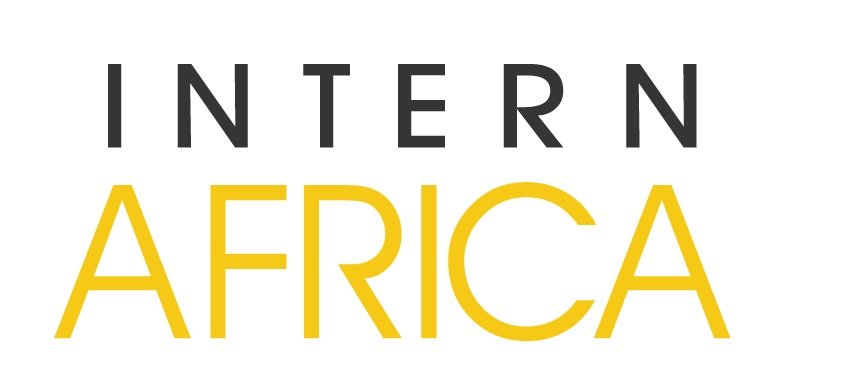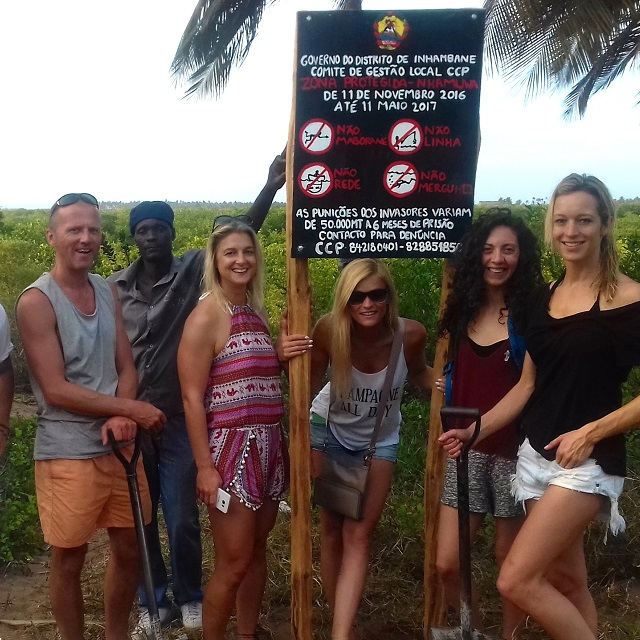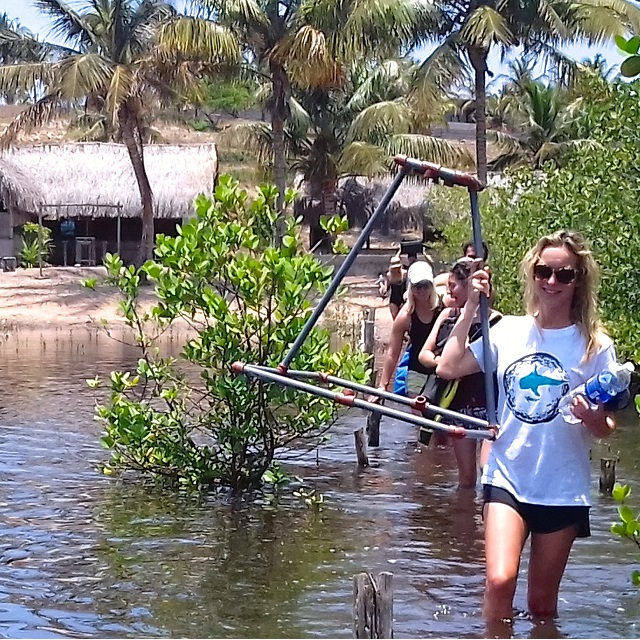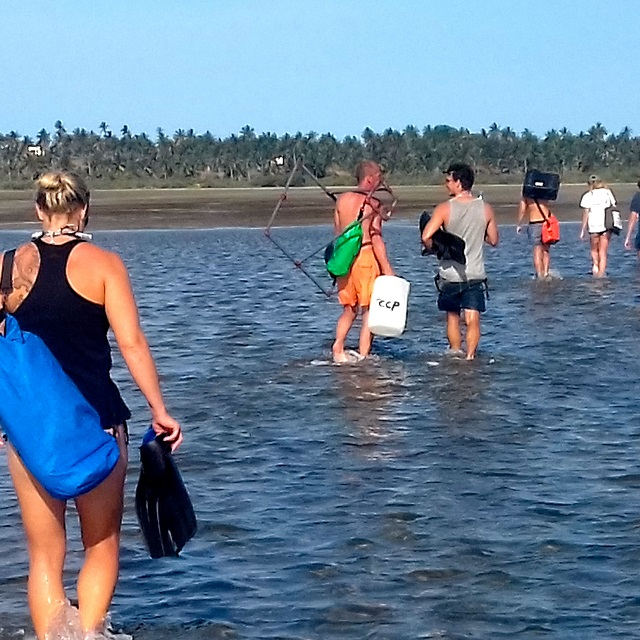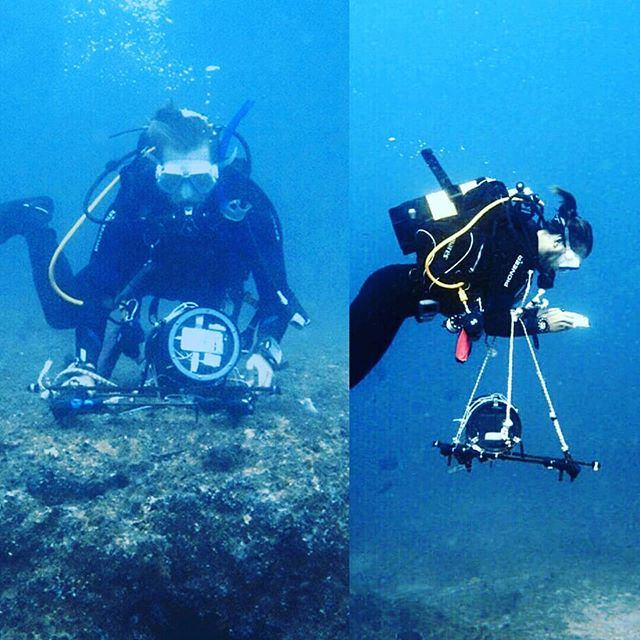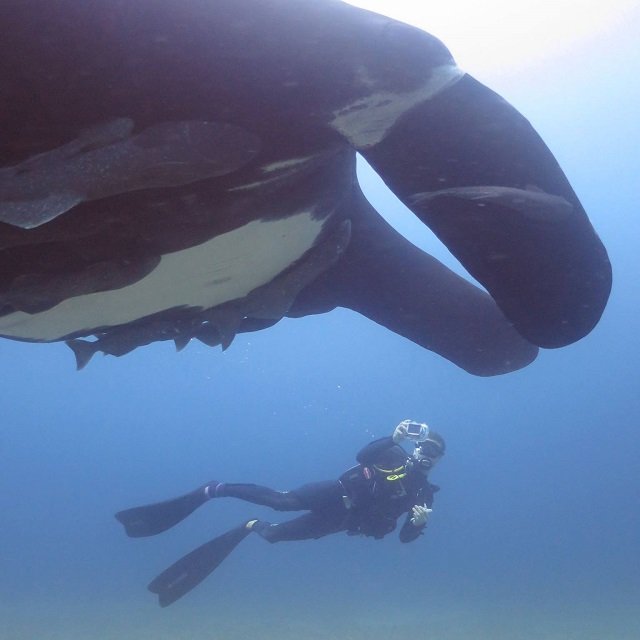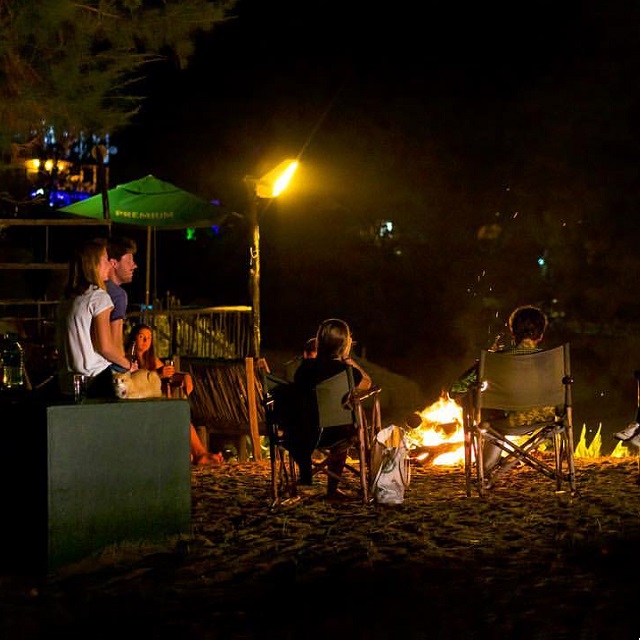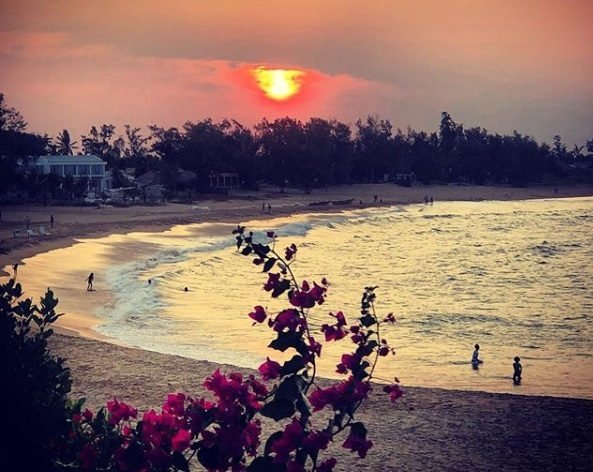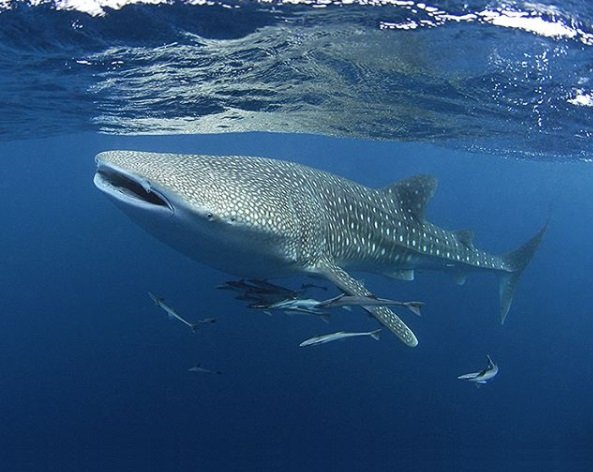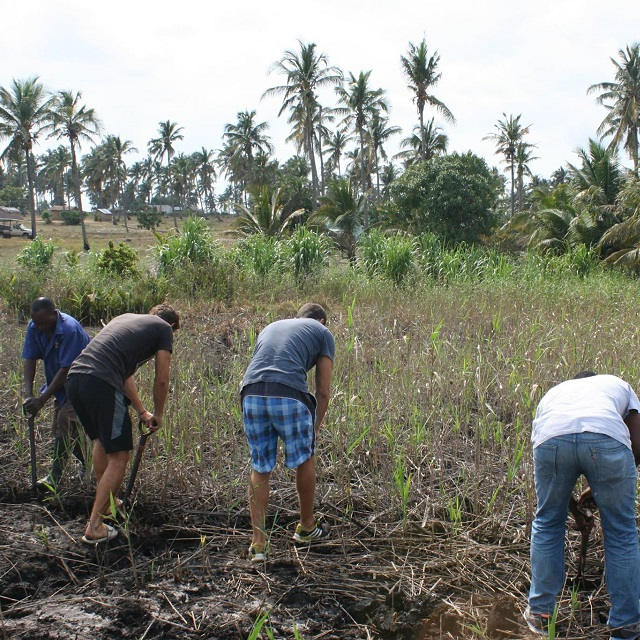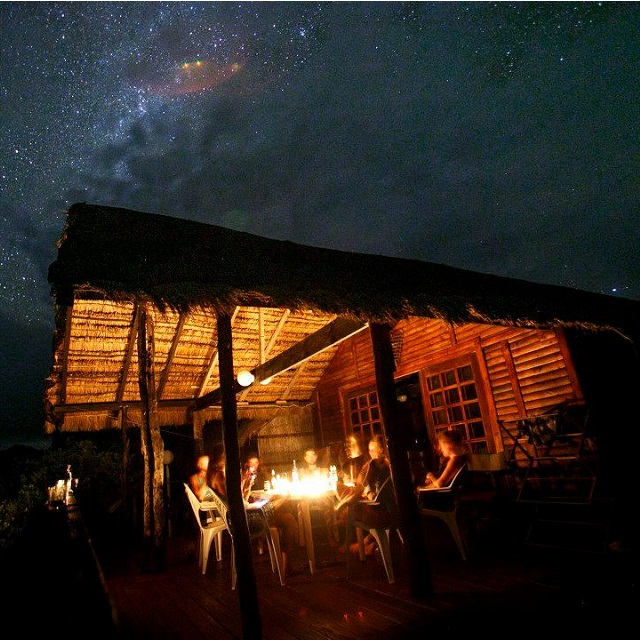Mozambique
MARINE CONSERVATION VOLUNTEER PROGRAM
MARINE CONSERVATION VOLUNTEERING
This multi-faceted Marine Conservation Project is focused on a diverse and particularly unique array of research programmes which range from the largest to the smallest of sea creatures, and includes the vitally important reef ecosystems that are currently facing numerous man-made threats. Through the extensive research and information conducted and gathered by the many programmes running concurrently, gaining a full and holistic understanding of the environment, as well as each and every participating species within it, is vital to the success of these on-going and long-term conservation efforts.
The information gathered further aids the program in their many decision making and conservation practices, empowering them to provide the best protection they can for the sustainable future of these incredible and necessary species. Operating along the beautiful coastline of Mozambique, you will have the unique opportunity to make meaningful impacts both in the conservation efforts, as well as in building and educating the surrounding impoverished communities.
The protection of this coastline’s natural and declining resources are of the utmost importance, and education is key to the long-term sustainability of the programs’ conservation and coastline restoration efforts. Your help is needed to curb the effects that humans have on the slow-growing ocean animal populations, as well as the collection of information for their further protection through a greater understanding of each species. Mozambique’s incredible oceanic life needs your help, and your mark will be a lasting one that future generations will thank you for.
The information gathered further aids the program in their many decision making and conservation practices, empowering them to provide the best protection they can for the sustainable future of these incredible and necessary species. Operating along the beautiful coastline of Mozambique, you will have the unique opportunity to make meaningful impacts both in the conservation efforts, as well as in building and educating the surrounding impoverished communities.
The protection of this coastline’s natural and declining resources are of the utmost importance, and education is key to the long-term sustainability of the programs’ conservation and coastline restoration efforts. Your help is needed to curb the effects that humans have on the slow-growing ocean animal populations, as well as the collection of information for their further protection through a greater understanding of each species. Mozambique’s incredible oceanic life needs your help, and your mark will be a lasting one that future generations will thank you for.
- Age: min. 18
- Location: Tofu Beach, Mozambique
- Requirements: 18 years, good physical fitness, flexible
- Group size: up to 15 participants
- Project duration: 2 weeks - 12 weeks
- Laundry: Included
- WIFI: included Free wireless internet access
- Linen/towels: Linen provided. Bring your own towels with
Location
The project is located in Tofu Beach, Mozambique
Requirements
The minimum age is 18 years old. There is no restriction in terms of max. age. Being fit and able to work are the main requirements due to the nature of the programme.
Training/qualifications
If you do not have a PADI diving certificate, you can obtain your PADI in Mozambique at the project.
Upon arrival
Your final destination airport is Inhambane, Mozambique and the best option to get to Inhambane is via Johannesburg, South Africa, which is the main airline hub in Southern Africa. Inhambane airport is a tiny little airport and is 22km from Tofo Beach. On your arrival at Inhambane you will be collected and taken to Tofo which will be your home for the coming weeks!
A typical day
The project is located in Tofu Beach, Mozambique
Requirements
The minimum age is 18 years old. There is no restriction in terms of max. age. Being fit and able to work are the main requirements due to the nature of the programme.
Training/qualifications
If you do not have a PADI diving certificate, you can obtain your PADI in Mozambique at the project.
Upon arrival
Your final destination airport is Inhambane, Mozambique and the best option to get to Inhambane is via Johannesburg, South Africa, which is the main airline hub in Southern Africa. Inhambane airport is a tiny little airport and is 22km from Tofo Beach. On your arrival at Inhambane you will be collected and taken to Tofo which will be your home for the coming weeks!
A typical day
-
Generally, weekdays start at 07:00 and run until 16:00, and weekends are free to explore the beach, local area, and participate in the surf lessons
included whilst you volunteer. At times you may come back later than 4pm or start earlier than 7am.
- 07:00 - Breakfast
- 07:30 - Research dive with one of our researchers
- 10:30 - Data and image processing
- 11:00 - Reef health data analysis
- 12:00 - Lunch
-
13:00
- Survey a protected area
- Community conservation meetings
- Educational & outreach material creation
- Reef camera trap analysis
- Mangrove and estuary reef surveying (Seahorses!)
- Drone megafauna transects
- Visiting and helping to run the project fsh farm
- Scientifc discussions and seminars - 16:00 - End of the day surf, beach braai, talks and/or swim
- Diving and Marine life
Located in Tofo, the Diving and Marine Life Research Project is focused on the two species of dolphin, in particular, that occupy the bay: the elusive Humpback dolphin, and the more commonly known Bottlenose dolphin. Currently the research project operates a satellite study to assist with the collection of information regarding the dolphin’s behaviour, their use of the habitat, the number of dolphins utilising the area and other necessary data regarding these majestic creatures. Many of the surrounding mangroves (marine forests) that breed life into the surrounding fisheries have already been privy to the conservation efforts of the project with great success, further enabling the support of local communities.
This unique and established coastline is magnificently surrounded by coral reefs that are the life blood of a quarter of all the ocean’s species, overall, and are one of the most essential systems in need of protection and restoration. They are vitally important in maintaining a healthy and balanced sea life ecology. You will assist in the completion and collection of world-leading research on the diversity, habitat use and the movement patterns of sharks that frequent the area. Work will also be done in the area of deploying tags, while having the chance to examine the lives of these misunderstood beauties.
During a dive into Tofo’s breath-taking reef system, you will experience the abundance of marine turtles, the array of harmless reef-associated sharks, all while surrounded by the bay’s diverse array of ray species. Data will be collected regarding the use of the habitat, the abundance of sea life along the reef, as well as the health, sex, and size of the marine animals, in order to gain a better understanding and build up a greater knowledge base of the area. All this is done with the aim of increasing conservation and protection efforts, furthering the on-going efforts of the project.
The information collected will be used to piece together exactly how each and every species fits into the unique ecosystem along this pristine stretch of the Southern Mozambique coastline. The data and information collected is vital to the conservation initiatives of the project moving forward, with the eventual aim of spanning the entirety of this incredible coastal environment. - Estuary of Tofo
The estuary at Tofo plays an immensely important role in the lives of the surrounding marine life, the enormous mangrove forests in and along the shoreline are home to a versatile mixture of marine life. An estuary is an area where the ocean meets a river, creating a unique environment for a multitude of fresh and salt water marine and coastal wildlife species. Included in this unique setting are active coral reefs that play host to enormous amounts of the marine life population, further reinforcing the need for this areas conservation, maintenance and protection. -
Monitoring Protected Areas and Aiding Community Development
Many of the marine life species that live along the coastline of Mozambique are at risk to the illegal poaching and other exploitation activities that are perpetrated by some of the more than 60% of the nearly 26 million strong population that live in close proximity to the coast. The introduction of the project’s community garden has helped to serve as an educational model for the community and its surrounds, helping to bring about an era of conservation and self-sustainability not yet seen here before in this region. Pig farming, fruit farming and the ground water irrigation projects are all helping to bridge the gap between the fragile coastline wildlife, and the communities that share this stretch of the coast. The estuary at Tofo is the chief breeding ground for many species of shrimp and smaller fish that are vital to the attraction of bigger fish, ideally targeted by the largely fishing communities of the area. It has occurred that fisherman from the communities catch and consume the smaller fish, thus leaving nothing for the bigger fish to feed on, forcing them to seek for their food elsewhere. This in turn, has left the fisherman catching only small fish, perpetuating the cycle of only catching small fish.
From this imbalance however, an opportunity for the creation of, and education about, estuaries has arisen, allowing the project to create and launch a fishing habitat device in the estuary itself that can be replicated for less than $3, US. The device is used on a section of the reef that is in danger, and allows the smaller fish a protected area to reside in. More than that, these areas can be used as educational tools to educate the community about how fishing cycles work. -
Shark Tagging
The shark tagging part of this project involves the capturing and tagging of sharks, while tagging a Bull shark requires the surgical insertion of an acoustic tag inside of the shark itself. This work is done by boat, and volunteers that have been with the project for the longest period do have preference when it comes to getting a spot on the boat. Unfortunately not everyone is guaranteed of this opportunity. The capturing and tagging of these aquatic beasts is not for the faint hearted, and is a challenge that requires predictive knowledge regarding a shark’s behaviour. -
Camera Traps and Monitoring Reef Health
Volunteers will be required to complete video transects on other reefs that have been dived, analysing video footage and counting the number of species and fish in each family, all the while noting and measuring other relevant environmental information and correlations. This information is vital in gaining insight into the overall health of these individual ecosystems, measured against an already established base. The continuity of this work further aids in participation with the local and provincial governing bodies, helping to further design and implement regulations to ensure the continued existence of these necessary reef systems. -
Education
Beyond the protection and conservation aspects of this program, educating the local communities and the development of enforcement agencies are also part of the on-going projects run by the program. Workshops are held and run by the program within the local communities to better teach them how to manage and protect the areas natural resources. Furthermore, the creation and protection of scientifically monitored areas helps to repopulate the coastline and reef systems. Annual conservation and swimming programs are also run for the coastal police, the ladies and gentleman enforcing the laws and protecting marine species, hands-on. One of the local conservationists works in the schools to teach children about the importance of proper waste management, the reduction in plastic pollutions and the importance of marine conservation. -
Community
The Marine Conservation Project is wholly dedicated to the upliftment, development and safety of the communities living around the estuary, educating them on the inherent dangers of the estuary, such as sharks, when it is safer to spend time in the estuary, and when it is best to stay out of the water. Volunteers along with marine biologists regularly pay visits to the community to teach them about the dangers of the water and how to avoid these dangers. Additionally volunteers and biologists help to create protected areas which the community should not fish or swim in. A sustainable development educational system has been put into place to teach the children and the community the importance of sustainable development, as well as the necessary skills for the further development of similar projects. Through these community projects you have the unique opportunity to learn about the local culture first hand. The community has also been kitted with a Community Garden, boasting a chicken pen and fruit-bearing trees of several varieties, again with the aims of education and self-sustainability in mind. More specifically, the Community Garden teaches local residents what is needed to be self-sustainable. You should not be afraid of getting their hands a little dirty, building pig pens, pig housing, shade and weather protection is all part-and-parcel of the outreach experience.
Regular volunteer beach clean ups are conducted by staff and volunteers along Tofo beach, clearing away micro plastics and nurdles, the small pellets that are the building blocks of all other known plastics. Plastics, especially nurdles are extremely damaging to all marine life, threatening the very existence of some of the rarest ocean dwelling species on the planet. - Scientific Research
Scientific research on the project is conducted using the following three methods:
Photo Identification
Due to the variety of data analysis options that can be drawn from photo identification, this method is an integral part of our scientific research as a whole. Through photo identification we are able to establish individualistic research efforts and data signatures of whale shark spot patterns, whale tales, leopard and tiger shark spots and stripes, manta ray dot signatures and the identification of bull sharks, helping to better identify individual animals accurately. The images that are taken are sent to an international signature database, helping with the international identification and sightings of species and individuals.
Analysis
You may at some point be asked to assist with the biopsies of animals, as well as other forms of analysis. From these samples, data that is analysed is able to provide information regarding the migration patterns, including the DNA sampling of whales, turtles, dolphins, manta rays, whale sharks and bull sharks. The majority of the analysis participation by volunteers is a matter of “when the opportunity arises”, or as is required, and as such nothing can be guaranteed.
Field work
Aside from all these research programmes within the local communities, and the conservation and research efforts aimed at the mangroves, you will find yourself experiencing the Mozambique coast like no one else. From research diving expeditions conducted on thousands of diverse and magnificent creatures living in and around the reef, to monitoring the coral reefs and estuaries, clearing the beach of plastic and other harmful agents, analysing plankton on the shoreline and even taking whale DNA without harming them. All this excitement and more is all to be expected from volunteers with the right attitude and the will to make a change.
General Dive Day
Research programmes
You will be based in the Volunteer House with 5 same -sex rooms each with two beds. Views of Tofo bay, as well as easy access on foot to the Foundation offices and the restaurant. Your Project Coordinators reside within the lodge and are on call 24 hours a day. The lodge is open from 7am until 11pm and has -24 hour security on site, with further staff members who are always happy to help.
You have a choice of meals from the menu each day, which you will eat in the lodge restaurant. Sometimes a barbeque will be organized, then this will be done either at the house or another outdoor area. All food is cooked fresh each day.
Dates
The program is very flexible in terms of start date, but preferably starting on Mondays
Rates
Rates includes
The program is very flexible in terms of start date, but preferably starting on Mondays
Rates
| Duration | Fees |
|---|---|
| 2 weeks | 2199 GBP |
| 3 weeks | 2899 GBP |
| 4 weeks | 3499 GBP |
- Full board and lodging including 3 meals a day at our restaurant.
- All airport transfers from Inhambane Airport upon arrival and departure.
- All daily transfers to and from your projects during your stay.
- Weekly laundry and housekeeping service.
- Comprehensive Orientation Program.
- Assistance and support from the Project Managers and staff.
- Coral garden and estuary expeditions.
- Coastline trips.
- Scientific lectures and seminars.
- Research training.
- All dive costs, including equipment hire.
- Freshwater lake trips.
- Guided dissections.
- Surfing
- Guided whale watching
- High speed internet access.
- Local community interaction
- Flights/transfers to Inhambane Airport
- Visa fees (if required)
- Travel Insurance
- Beverages
Click here to sign up.
